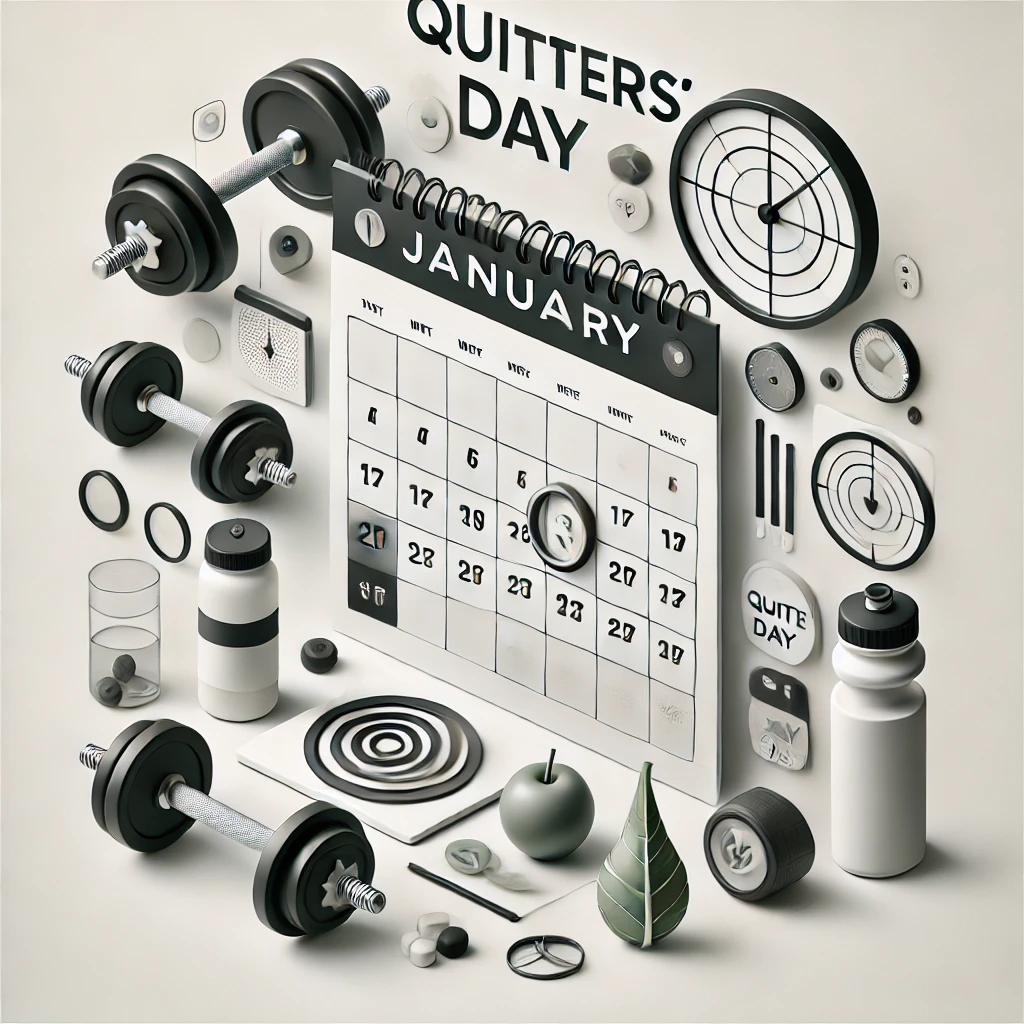QuittersDay shift to Recalibate Day
Every January, millions of people set goals to improve their health, fitness, and overall well-being. Yet, by mid-January, many begin to waver. Often referred to as “Quitters’ Day,” and describes the point when motivation to stick to New Year’s resolutions and goals begins to drop off. Research from fitness apps and activity trackers reveals that by mid-January, people are significantly less likely to follow through on their goals and resolutions.
But here’s the truth: Quitters’ Day doesn’t have to mark the end of a journey—it can be a powerful turning point- Recalibrate Day. With the right mindset, resilience, and tools to recalibrate, getting back on track can turn into a win.
Understanding why this happens is the first step to moving past it.
Why Do We Quit?
Unrealistic Expectations
Overly ambitious goals can feel unattainable when faced with everyday demands. Resolutions like “exercise every single day” or “cut out all sugar” often fail because they don’t account for real-life variability.
Lack of Immediate Results
Our brains crave instant gratification. When changes aren’t immediately visible—like weight loss or increased strength—it’s easy to feel discouraged and give up.
Negative Self-Talk
When we slip up, many of us fall into a cycle of harsh self-criticism. Thoughts like “I knew I couldn’t do this” or “I’m just not disciplined enough” undermine our confidence and drive.
Stress and Competing Priorities
Life’s challenges don’t disappear just because we set goals. Without strategies to manage stress and maintain focus, it’s easy to lose sight of our goals.
How to Reset, Build Resilience, and Stay on Track
Falling off track doesn’t mean failure—it’s an opportunity to reframe the approach and build resilience. Here’s how to move forward:
1. Shift Your Mindset
Growth starts with how setbacks are perceived. Instead of viewing a missed workout or a skipped meal plan as failure, see it as feedback. Get curious about it ask questions that can help develop strategies for behavior change for example: What got in the way, and how can this be adjusted?
Studies in positive psychology show that cultivating a growth mindset—believing that you can improve through effort—leads to greater perseverance and success.
2. Practice Resilience Training
Resilience is the ability to bounce back from challenges. Strengthen it by:
• Breaking goals into smaller steps: Focus on small wins instead of overwhelming long-term outcomes.
• Reflecting on past successes: Recall times when there were obstacles that were overcome as reminder of capabilities and ability to persevere.
• Anticipating obstacles: Plan for setbacks and rehearse strategies to overcome them.
Think of resilience like a muscle—the more you train it, the stronger it becomes.
3. Calm Self Limiting Beliefs and Negative Rumination
Negative self-talk and limiting beliefs can be paralyzing, and can start the rumination spiral, but it’s not permanent. Examples to interrupt the cycle:
Incorporate a healthy dose of
self-compassion
Reframe limiting beliefs
Focus on the Process not the outcome
4. Set Realistic, Process-Oriented Goals
Instead of aiming for “lose 10 pounds,” focus on actionable steps like “exercise 3 times per week” or “eat vegetables with every meal.” Small, consistent actions build momentum and lead to lasting results.
5. Incorporate Accountability and Support
Sharing your goals with someone—a friend, a family member, or a coach—makes you more likely to succeed. Accountability provides encouragement and maintain focus when motivation dips.
Work with a Coach
A coach does more than hold you accountable; they provide the tools, insights, and strategies to guide you toward success.
•Mindset Development
•Stress and Recovery Strategies
• Tailored Plans for Sustainability
• Guidance Through Setbacks
Start #RecalibrateDay with 7 BIO
7 Bio integrates evidence-based methods across health, fitness, nutrition, and performance, giving you the tools to optimize your physical and mental well-being.
